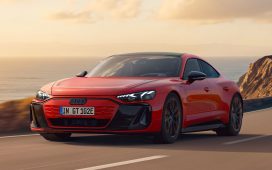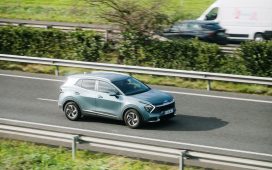Cars driven in Australia consume up to 20% more petrol than manufacturers are claiming, according to a program that tests “real-world” on-road fuel efficiency with laboratory calculations.
The Australian Automobile Association (AAA) testing – funded by the federal government – also found four of the 13 vehicles tested in its latest round of compliance checks exceeded regulatory limits for oxides of nitrogen or carbon monoxide.
The testing of passenger cars, small and medium SUVs and larger people movers found that seven of the 13 vehicles delivered fuel consumption within 5% of the claims made by manufacturers.
However, five cars exceeded their lab results by between 9% and 20% when tested on the road. One car performed 7% better than claimed by the manufacturer.
The testing included averaging the results of drives conducted on urban and rural roads as well as motorways at various speeds.
The testing was conducted in Victoria’s Geelong region in December 2023 in conditions the AAA said were strictly controlled and in line with European Union legislation that “ensures fuel consumption and CO2 results are repeatable and minimises the influence of human factors such as driving style and changing traffic flows”.
According to the automobile association, the worst offenders in the second round of its testing were:
BMW X3
It had the largest discrepancy of vehicles tested. The AAA found that in real-world testing, the 2021 model of the SUV required 8.9 litres of fuel to drive 100km – 20% more than the 7.4 litres per 100km reported by the manufacturer from its lab test.
MG3
The MG3 was found to use 19% more fuel than its mandated lab result of 6.7 litres per 100km in tests of the 2023 model of the compact car.
Audi Q5
Audi’s Q5 SUV was found to consume 17% more petrol than claimed, with a real-world performance result of 5.6 litres per 100km on the 2022 model compared with its mandated lab test result of 4.8 litres.
Toyota Yaris Cross Hybrid
Toyota’s Yaris Cross Hybrid used 12% more petrol than its claimed efficiency of 3.8 litres per 100km, tests of its 2021 model found.
Conversely, some cars performed better than the manufacturer’s claims.
Testing of the Kia Carnival found its 2023 model used 7% less fuel on the road than its mandated lab result, with the AAA claiming its real-world fuel efficiency was 6 litres per 100km.
Pollution from vehicles was also tested. Four of the 13 vehicles recorded pollutant results that exceeded Australian regulatory limits for lab tests.
Three exceeded the limits for oxides of nitrogen: the Kia Carnival, the Hyundai Staria and the Kia Sportage, the AAA said, while the MG3’s on-road carbon monoxide emissions were 85% higher than the regulated lab test limit.
The AAA managing director, Michael Bradley, said the real-world testing program provided consumers with greater transparency and would “drive down demand for models that over-promised and under-delivered”.
“When comparing vehicles, consumers cannot assume that better lab performance will translate into real-world savings,” Bradley said.
“This information could help a new car buyer save hundreds of dollars a year while cleaning up our light vehicle fleet.”
The Australian government-backed testing scheme was put into place after a 2015 scandal involving Volkswagen, which found the manufacturer had misled consumers who may have deliberately bought vehicles based on incorrect claims of lower emissions.
A BMW spokesperson said the company was “committed to delivering the highest levels of efficiency for its vehicles across all powertrains and operates in full accordance with the Australian government on local consumption and emissions testing”.
MG, Audi and Toyota were contacted for comment.
The first tranche of real-world testing found fuel consumption rates of up to 13% higher than lab tests.











